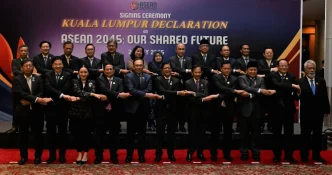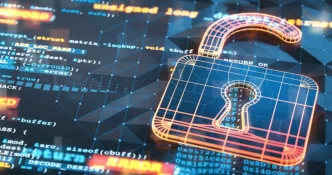As the Association of Southeast Asian Nations (ASEAN) charts an ambitious path toward deeper regional integration with its ASEAN 2045: Our Shared Future vision, cybersecurity emerges as a cornerstone of its digital and political aspirations. Unveiled at the 46th ASEAN Summit in Kuala Lumpur in May 2025, this blueprint aims to fortify the region’s resilience against a backdrop of escalating geopolitical rivalries. However, with major powers like the US, China, and Russia intensifying their contestation in cyberspace, ASEAN’s goals face significant challenges that could reshape the region’s digital landscape over the next two decades.
Cybersecurity at the Heart of ASEAN’s Future
The ASEAN 2045 vision document, a comprehensive framework for long-term cooperation, places cybersecurity as a critical priority within its Political-Security Community (APSC) and Economic Community (AEC) strategic plans. Under Strategic Goal 4 of the APSC, ASEAN seeks to remain a central force in shaping a rules-based regional architecture, even in cyberspace, by fostering confidence-building measures and exchanges in emerging security fields. Strategic Goal 5 emphasizes the region’s commitment to combating transnational crimes such as online scams and cybercrime while addressing the misuse of information and communication technologies (ICTs) and artificial intelligence (AI).
Parallel to these security-focused ambitions, the AEC Strategic Plan underscores the need for enhanced digital connectivity, a goal that hinges on robust cybersecurity measures to protect digital ecosystems and build trust in online services. These dual priorities reflect a broader understanding within ASEAN that cybersecurity is not merely a technical issue but a foundation for economic growth and regional stability.
The significance of these goals was echoed by Malaysia’s Prime Minister Dato’ Seri Anwar Ibrahim during his address at the IISS Shangri-La Dialogue (SLD) in Singapore in 2025, where Malaysia assumed the ASEAN chairmanship. His speech highlighted the potential for cybersecurity cooperation to drive economic development and trade. Yet, the event also exposed the geopolitical fault lines that threaten to undermine these aspirations, as Western leaders issued stark warnings about the actions of China and Russia in cyberspace.
Geopolitical Rivalries Cast a Shadow
The Shangri-La Dialogue served as a platform for Western concerns over the region’s deepening ties with China and Russia. European Commission Vice-President Kaja Kallas openly criticized China’s cyber activities and drew parallels with Russia’s actions in Ukraine, urging Asian nations to remain vigilant. Similarly, the Netherlands’ Defense Minister Ruben Brekelmans highlighted allegations of Chinese cyber espionage targeting Dutch sectors like aerospace and semiconductors, signaling broader Western unease with China’s growing influence.
US Defense Secretary Pete Hegseth added to the chorus of caution, warning of China’s threat to the Indo-Pacific and suggesting that economic cooperation with Beijing could complicate defense strategies during times of tension. This message appeared directed at ASEAN’s plans to upgrade the ASEAN-China Free Trade Area (ACFTA) at the 47th ASEAN Leaders’ Summit in October 2025, an agreement that includes provisions for the digital economy and could further entangle the region in geopolitical disputes.
These diplomatic exchanges underscore a critical dilemma for ASEAN: how to balance its inclusive approach to external partnerships with the mounting pressures from geopolitical tensions. The region’s plans to enhance cybersecurity cooperation with Russia through frameworks like the ASEAN Defence Ministers’ Meeting-Plus (ADMM-Plus) have also raised eyebrows among Western powers, who fear such engagements could compromise ASEAN’s neutrality in cyberspace.
Cyberwarfare as a Global Battleground
Beyond the rhetoric of international forums, cyberspace has become a tangible arena for geopolitical conflict. In April 2025, China accused the US of launching cyberattacks on its critical infrastructure during the Asian Winter Games. A month later, China and Taiwan exchanged allegations of cyber aggression, with Beijing offering rewards for information on attacks purportedly orchestrated by Taipei as recently as June 5, 2025. These incidents highlight China’s growing assertiveness as a cyber power and foreshadow intensified competition with the US in the digital realm.
Elsewhere, Ukraine’s conflict with Russia offers a stark example of cyberspace as a tool of asymmetric warfare. On June 1, 2025, Ukrainian drones targeted Russian military airfields, while the country’s military intelligence agency claimed responsibility for cyberattacks on Russia’s state-owned aircraft manufacturer Tupolev. These actions, aimed at disrupting Russia’s military capabilities, are closely studied by analysts for their potential relevance to a future China-Taiwan conflict, illustrating how cyber tactics can level the playing field in disputes between unequally matched powers.
For ASEAN, these global developments are a reminder of the complexities of navigating a world where digital infrastructure is both a driver of progress and a vulnerability. The region’s member states, with varying levels of technological advancement and cybersecurity readiness, risk becoming collateral damage in broader cyber conflicts if they fail to fortify their defenses.
Balancing External Partnerships
ASEAN’s vision for 2045 acknowledges the opportunities and risks presented by geopolitical tensions, advocating for inclusive cooperation with all external partners, including in cybersecurity. This approach aligns with the organization’s long-standing preference for non-discriminatory engagement, ensuring that no single power dominates the regional agenda. However, maintaining this balance will grow increasingly difficult as dialogue partners like China, Russia, the US, and the European Union deepen their rivalries.
Initiatives to promote digital trade and technology cooperation with China and Russia, whether at the national or regional level, are viewed by some as a strategic hedge against uncertainty. Yet, such moves are likely to provoke counteractions from Western powers and their Asian allies, who may perceive these partnerships as aligning ASEAN with adversarial interests. The region’s ability to sustain its neutral stance while pursuing ambitious cybersecurity goals will be tested in the coming years.
Domestic and Regional Challenges
Internally, ASEAN faces the challenge of harmonizing cybersecurity policies across its diverse membership. Countries like Singapore boast advanced digital infrastructure and robust cyber defenses, while others, such as Laos and Cambodia, grapple with limited resources and technical capacity. Bridging this gap is essential to realizing the collective vision of a secure digital ecosystem, but progress is often slowed by differing national priorities and economic disparities.
Moreover, the rise of transnational cybercrimes, such as online scams, poses a direct threat to public trust in digital services. Addressing these issues requires not only technical solutions but also coordinated legal and regulatory frameworks—a task complicated by the varying political systems and governance structures within ASEAN.
The Road to 2045
With 20 years to achieve the ASEAN 2045 vision, the region stands at a crossroads. The cybersecurity goals embedded in the framework are both a shield against external threats and a catalyst for economic and social progress. However, their success hinges on ASEAN’s ability to navigate a fractured geopolitical landscape without succumbing to the pressures of great power rivalry.
The coming decades will test whether ASEAN can transform its inclusive rhetoric into tangible outcomes in cyberspace. As tensions among its external partners ebb and flow, the region must remain agile, prioritizing resilience and cooperation over alignment with any single bloc. Only then can ASEAN hope to secure its digital future amidst an increasingly contested world.
















